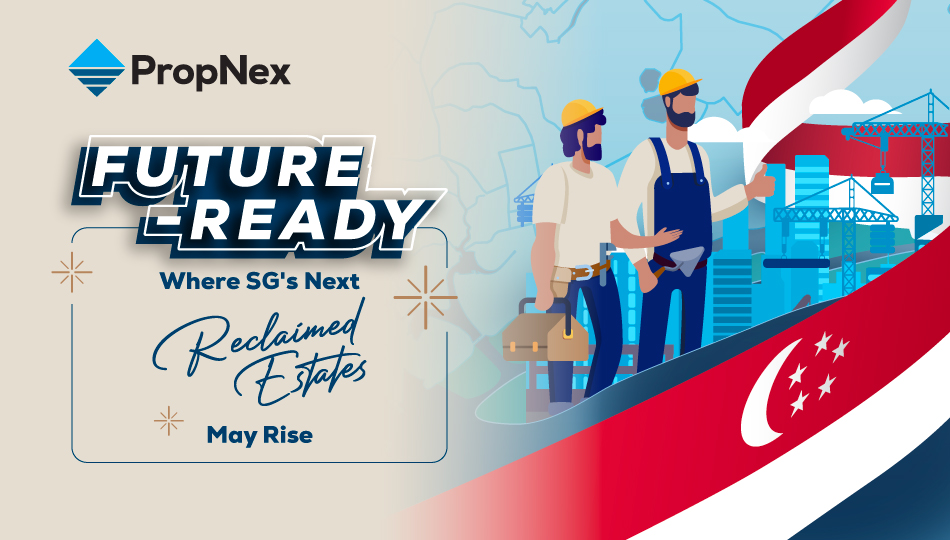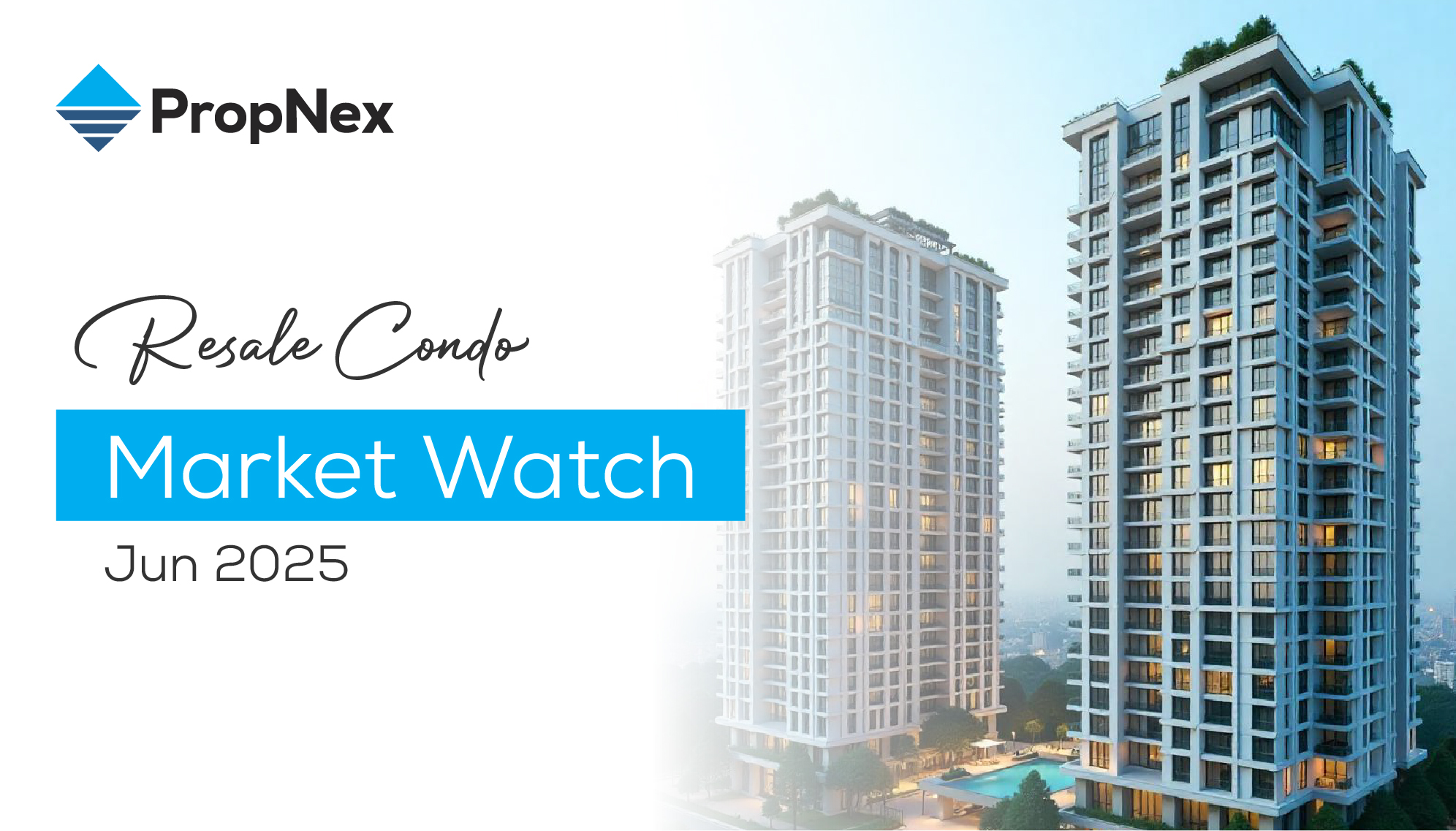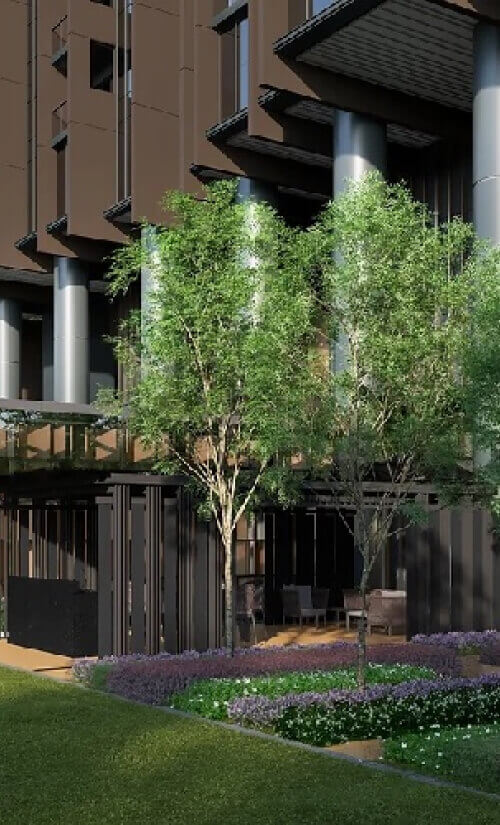PropNex Picks
|August 05,2025Future-Ready: Where SG's Next Reclaimed Estates May Rise
Share this article:
In a country where land is scarce and ambition is limitless, Singapore has never waited for land to appear - we create it. Through land reclamation, we've transformed coastlines into thriving communities and economic hubs.
As we celebrate Singapore's National Day, it's worth reflecting not just on how far we've come, but on how boldly we continue to build towards the future - quite literally. With upcoming projects pushing the boundaries of land and innovation, Singapore is once again setting the stage for tomorrow's homes.
Here's what this article will explore:
Now, as we plan for the next phase of growth - in housing, sustainability, and urban innovation - the spotlight turns once again to the sea.
Singapore's land reclamation journey began as early as 1822, when the first fills were made along the Singapore River to create what is now Boat Quay. By the mid-19th century, major efforts like the Collyer Quay reclamation transformed the city's waterfront to support commerce and shipping.
Singapore River in the 1800s - Source: NLB
Post-independence, Singapore ramped up reclamation to fuel its rapid growth. The 1960s to 1980s saw landmark projects in East Coast, Jurong, Changi, and Marina Bay. These were built not just for homes, but for airports, ports, industries, and entire communities.
Marina Bay in the 60s - Source: NLB
East Coast Park today - Source: NLB
By the early 1990s, approximately 10% of Singapore's land was reclaimed. Today, that figure stands at over 25%, showcasing a remarkable transformation driven by foresight, engineering, and necessity.
Source: NLB & NTU
With just 735.7 square kilometres of land, Singapore has always had to think ahead to ensure its long-term growth. While early reclamation efforts addressed immediate post-independence needs, today's reclamation efforts are future-oriented - tackling climate change, urban congestion, and economic decentralisation head-on.
Reclamation is now about more than just gaining space. It plays a critical role in:
Alleviating land scarcity to accommodate housing, industry, and urban infrastructure.
Bolstering climate resilience against rising sea levels and extreme weather.
Supporting decentralise growth by expanding economic hubs outside the traditional CBD core.
Future-proofing city planning through new, smart, and sustainable districts.
For homeowners and investors, this means that some of the most exciting future property opportunities may not exist yet - but they're already on Singapore's horizon.
As Singapore looks to meet tomorrow's needs, the next wave of land reclamation is already taking shape. These aren't speculative ideas - they are bold, strategic moves backed by government vision and long-term urban planning. Here are three key projects that could define the next era of housing and investment opportunities.
Tuas Port
Source: The Straits Times
Tuas Port, currently under phased development, is set to be one of the world's largest fully automated terminals, using cutting-edge port technology and designed to handle 65 million TEUs annually. Once fully operational by 2042, it will support the relocation of city port operations from Tanjong Pagar, Pasir Panjang, Keppel, and Pulau Brani - freeing up over 1,000 hectares of prime waterfront land for future development.
At the same time, to support the growing industrial ecosystem in the west, JTC is reclaiming 172 hectares of land in Northern Tuas, which is expected to complete in 2029. This effort, currently under way, is set to enhance Tuas Port's operational efficiency through better connectivity. Dedicated roads and supporting infrastructure will ensure seamless access to the port, further solidifying Tuas as a key manufacturing and logistics hub in Singapore's economic landscape.
The Greater Southern Waterfront
Source: Yahoo News
This newly available space (Tanjong Pagar, Pasir Panjang, Keppel, and Pulau Brani) will form the Greater Southern Waterfront - a visionary coastal district six times the size of Marina Bay, stretching 30 kilometres from Marina East to Pasir Panjang. URA's long-term plan includes: Seafront residential enclaves, commercial nodes, recreation and heritage spaces, as well as green and blue corridors.
One exciting component of this vision is Pulau Brani, which will be redeveloped under the Greater Sentosa Master Plan (formerly Sentosa-Brani Master Plan). Proposals for Pulau Brani include themed family attractions, a discovery park that celebrates its port heritage, potential upscale residential developments, and eco-sensitive enhancements such as restored wetlands and protected coral reefs. Its transformation could mirror the transformation of Sentosa Cove - turning underutilised space into an exclusive lifestyle destination blending waterfront living, leisure, and nature. This means that Pulau Brani could offer unique investment potential within the Southern Waterfront zone.
Source: Channel News Asia
Further plans in the Greater Southern Waterfront include the redevelopment of Keppel Club into about 9,000 new private and BTO units, repurposing Pasir Panjang Power District into a cultural and recreational hub, and the creation of a 10-kilometre coastal promenade that connects green and recreational spaces along the southern shoreline.
The question isn't if it will become a property hotspot - it's when. And early interest from developers and buyers is already growing.
From a real estate perspective, the Greater Southern Waterfront represents a rare chance to own prime seafront property near the city. For home buyers and investors looking for future-ready districts with strong upside potential, this area is one to watch.
Long Island (East Coast Extension)
Source: Mothership
Announced as part of Singapore's coastal protection strategy, Long Island is a bold proposal to extend the East Coast with approximately 800 hectares of reclaimed land. This ambitious plan integrates urban development with climate resilience - including tidal barriers, pumping stations, and a new reservoir to manage flood risks and safeguard water supply.
Long Island is envisioned to support up to 60,000 new homes, both public and private, across a series of future-ready, well-connected districts. In addition to housing, the plan will deliver new recreational spaces, coastal parks, and integrated green-blue corridors to enhance liveability and environmental sustainability.
This is still in its conceptual phase, but its sheer scale and purpose - to build climate resilience while expanding urban space - positions it as one of the most forward-looking projects in Singapore's urban planning history.
For homeowners and investors, Long Island could offer a rare opportunity: the chance to live along a modern reimagined coastline that blends leisure, nature, and smart urban planning. It's a compelling prospect for those who value long-term growth potential and a waterfront lifestyle.
We've seen it happen before: when Marina Bay was first reclaimed - beginning in the 1950s and extended through to 1992 - many were sceptical about building a new downtown in what was once a lagoon. Today it stands as Singapore's vibrant 360-hectare CBD, home to iconic landmarks like Marina Bay Sands, Gardens by the Bay, and premium residential and office developments.
Likewise, the East Coast Parkway was part of a massive 1,500-hectare reclamation carried out in seven phases from 1966 to the mid-1990s. This effort paved the way for East Coast Park, the East Coast Parkway expressway, and a highly desirable stretch of waterfront homes. Once seen as "too ulu or far out," the area is now one of Singapore's most sought-after residential districts.
What this tells us is: reclaimed land carries long-term potential, especially when backed by strong infrastructure and integrated urban planning.
Here's what buyers and investors should look for:
1. Early Master Plan Signals
Source: URA Master Plan 2025
URA's Master Plan offers clues on where future development may occur - and the latest Master Plan 2025 has already revealed major directions for Singapore's urban future. Projects like the Greater Southern Waterfront and Long Island are prime examples of these transformation zones, where early value growth often begins well before the first brick is laid.
2. Government Infrastructure Investment
Massive projects like MRT extensions (e.g. Circle Line closing the loop, Cross Island Line) often coincide with reclaimed estate development. Improved connectivity boosts liveability and desirability.
3. Urban Renewal Patterns
Singapore's past urban development shows that reclaimed areas are rarely left as "just land." In a land-scarce nation like Singapore, it is practically impossible to leave such value space idle. These areas are strategically developed into multi-use nodes, thoughtfully designed to serve a variety of functions.
Source: Today Online
Singapore is not just reclaiming land - it's reclaiming the future.
Expect the next generation of estates on reclaimed land to feature:
Smart-city infrastructure - like Internet of Things-enabled (IoT) energy systems and traffic sensors, as planned for the Greater Southern Waterfront.
Eco-first design - including wetland buffers, green corridors, and nature-centric promenades inspired by Gardens by the Bay.
Coastal resilience - such as integrated storm-water reservoirs and water-sensitive landscaping for flood mitigation.
Live-work-play integration - blending residential, commercial, and cultural nodes across extensive waterfronts like the 30km Greater Southern Waterfront.
These aren't just homes. They're next-gen districts, purpose-built for climate resilience, connectivity, and intergenerational vibrancy - embodying our ambitions this National Day.
This National Day, as we reflect on Singapore's incredible journey from mudflats to metropolis, it's worth remembering that some of our greatest stories were written on land that didn't exist before.
Reclaimed estates are more than just new neighbourhoods - they're symbols of vision, boldness, and belief in what's possible. And for the savvy buyer or investor, they represent some of the most exciting frontiers in Singapore's real estate story.
At PropNex, we're not just watching these developments - we're preparing our clients to seize the opportunities ahead.
Because when the future rises from the sea, we'll be ready to meet it.









